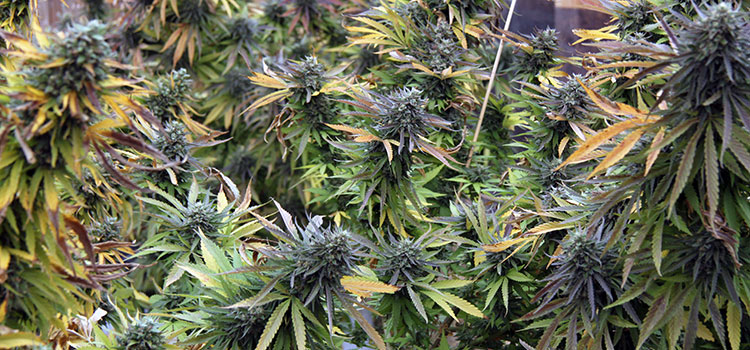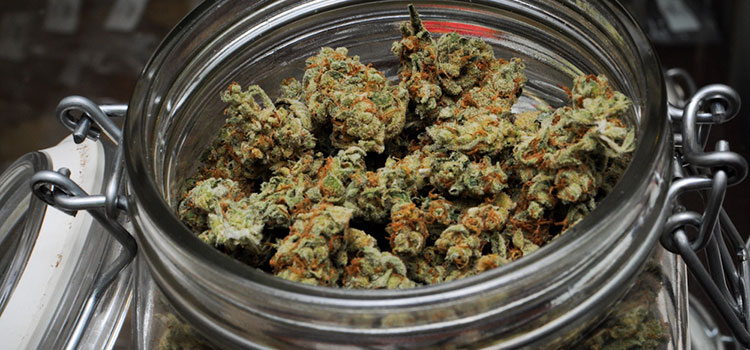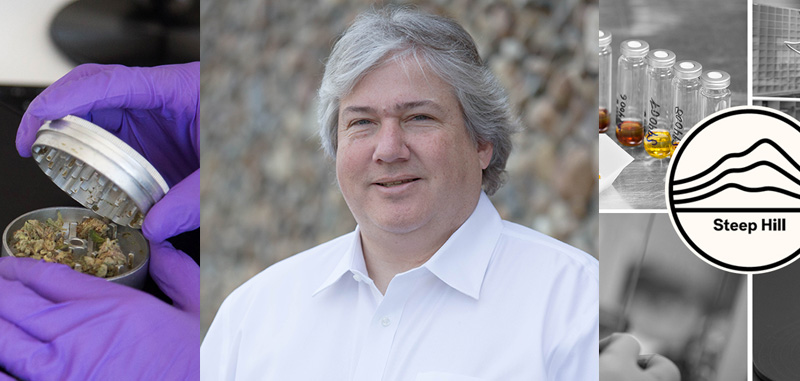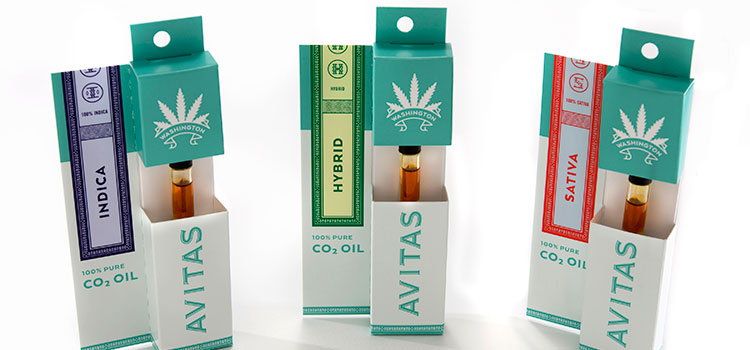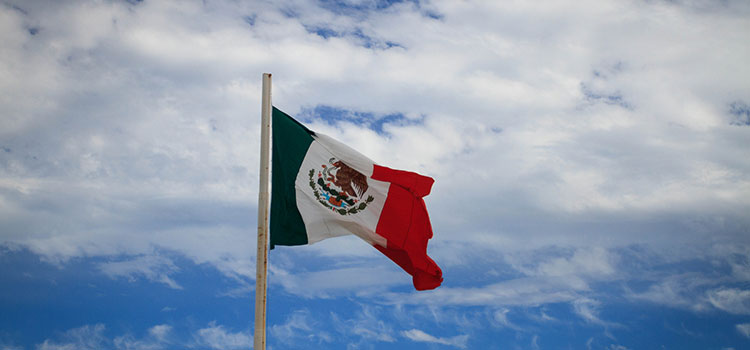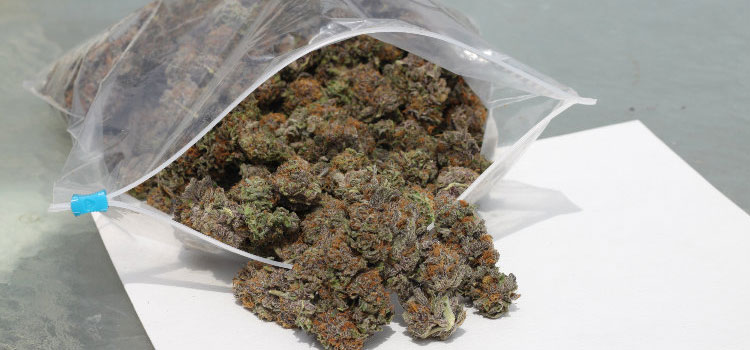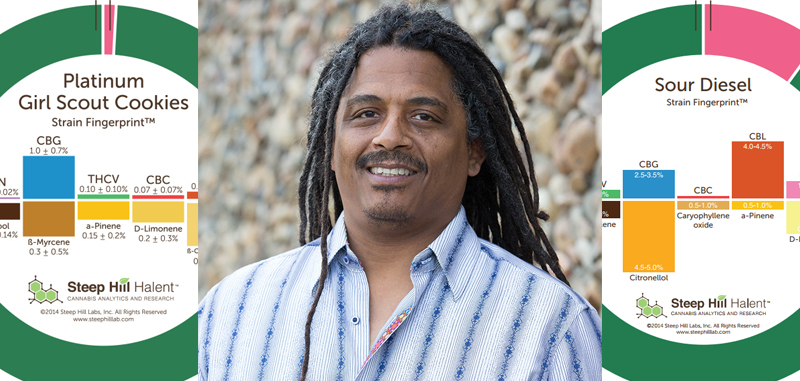 Shane Young is the founder of Natural Enemies, an Oregon-based distributor of beneficial insects that serve as natural pest management for cannabis grow operations and gardens around the northwest.
Shane Young is the founder of Natural Enemies, an Oregon-based distributor of beneficial insects that serve as natural pest management for cannabis grow operations and gardens around the northwest.
Shane recently joined our podcast host Shango Los to discuss his unique business model, which hinges primarily on introducing growers to the notion that specific predatory insects can be used to root out and destroy pest infestations that threaten commercial crops.
Subscribe to the Ganjapreneur podcast on iTunes, Stitcher, SoundCloud or Google Play.
Listen to the podcast
Read the full transcript
Shango Los: Hi there and welcome to the Ganjapreneur.com podcast. I’m your host, Shango Los. The Ganjapreneur.com podcast gives us an opportunity to speak directly to entrepreneurs, cannabis growers, product developers and cannabis medicine researchers, all focused on making the most of cannabis normalization. As your host, I do my best to bring you original cannabis industry ideas that will ignite your own entrepreneurial spark and give you actionable information to improve your business strategy, improve your health and the health of cannabis patients everywhere.
Today, my guest is Shane Young, founder of Natural Enemies, a distributor of beneficial insects for natural pest management. Glad you could be on the show, Shane.
Shane Young: Hey, how are you today, Shango?
Shango Los: Doing great. Across the country, everybody is talking about pesticides and cannabis right now. In fact, a case was just brought in Colorado last week that carcinogenic chemicals are being allowed in their legal marijuana. Similarly, in Washington State, the WSLCB is not even demanding pesticide testing in the recreational market. Consumers are getting pissed that the recreational market at this point is even less safe than the medical markets, where because at least those growers were holistically-minded.
How can these beneficial insects that you distribute decrease chemical pesticides?
Shane Young: Using the beneficial insects, a predatory mite can actually take out the whole equation of chemical usage. It’s an alternative method of management that not a whole lot of people are accustomed to, but what happens is you learn that it is a sustainable way of doing things. It is an effective way of managing your crop and like I said, can completely take out any type of chemical usage in it.
Shango Los: Does it take out the chemical usage because it’s more of a preventative? How does the dynamic work that the insects can totally take you off the bottle?
Shane Young: What happens is, what I’ve learned in the past being a grower, is that it’s always best to prevent a situation rather than coming in and trying to clean one up. It seems like you’re always coming from behind to take care of things and it costs you more money to begin with. What happens is your plant suffers and plant health altogether. You’re causing stress to the plant with either spider mites or some issue that you have and you’re just trying to keep cleaning it up and cleaning it up.
Using beneficial insects and predatory mites is something that you can do preventatively to where you don’t have to get to that problem. Basically, what growers go back to is just focusing on growing their plant.
Shango Los: Let’s break that out a little bit because a lot of our audience are both entrepreneurs who are running businesses and then the growers themselves. I’m sure they want to hear specifically how the pests work. Let’s take a common pest that we all hate like spider mites. Walk us through your determination and what you would actually do with the beneficial insects.
Shane Young: Sure. Number 1, when I walk into a place or a facility to do a walk-through with a grower, my main thing and what I’ve always learned is sanitation really goes a long way. That’s going to prevent a lot of disease and also, pest issues if you have coming into your crop. Number 2, I’ve always learned that mites or any problem that you generally have, it’s going to come in from your soil, it’s going to come in from your cutting or it’s going to come in from your employees that are working for you; that’s generally the basis of it.
What I try to do is take care of the problem from the root of it. I actually distribute a soil mite. Its main food source is actually fungus net larvae, but what we’ve learned using it long ago and it’s been around for more than 30 years is that it feeds on spider mites and their eggs in the soil. It feeds on thrips, root aphids, pathogenic nematodes, etc. There really hasn’t been anything that it doesn’t control, basically. So sanitation, then you work on your soil. If you have a problem from there, then we have a foliar mite that I sell.
One of them is called Amblyseis fallacis, more of a preventer, but what happens is it feeds on over 60 different types of mites and that’s the best one to use as a generalist. From there, if you run into an issue, I have one called Phytoseiulus persimilis that just feeds on the two-spot and it is really a voracious mite that can really clean up the situation if you can spot one early enough.
Shango Los: The application process is really interesting. Thank you for sending up a couple samples so the staff and I could check it out and be better prepared for the show today. We had a friend-of-a-friend was one of the only people that we knew who had copped to having a mite problem right now. We went over there yesterday and we took one of your canisters. I was actually surprised to find out that the mites are already alive in the container. I thought that they would be eggs or something like that.
We popped it open and there are all these really small, can barely see it guys and they’re all moving around with this medium that looks like cat litter, I guess. You take off the paper insert and then you put the top in and you shake it like a salt shaker over your plant. Some of that medium get on the plants, but what I’m seeing are all these cascading little beneficial mites that are all over the plant. It’s really exceptionally easy.
It actually reminds me of what I have to do when I have to spray, but this is something I’ll only have to do once because I guess the idea is that once I salt-shaker them onto the plants, they set up a residency. Do they actually procreate on the plant or do they only live out one life cycle on the plant?
Shane Young: First of all, Shango, it’s not cat litter.
Shango Los: It looks like cat litter. What is it, though?
Shane Young: I know. Generally, it’s a sterilized vermiculite or sterilized brand that’s used at the insectary. What happens is, it does take the place of chemical applications. What people need to know is that it may need to be multiple applications, but predatory mites are just like me and you. They need a food source in order to mate and reproduce. You can apply a ton of adult mites to your plant, but if there’s no food for them, they’re just going to go and search for it, basically. Sprinkling them over the plant is one way of doing it.
I would prefer to have people do it at the base of the plant because their natural searching method is to go up; basically, they climb up the plant and search for food is what they do. That’s one way of doing it. For you guys to think about it, it takes the place of spraying. You don’t have to suit up. You don’t have to go do it. You don’t have to worry about re-entries and causing phytotoxicity to your plants. They do take up residency depending on the amount of food that you have in your environment.
What we focus on is to eventually prevent that to where there is no food for them and let your comfortable balancing out that threshold of how many mites is too many mites for my plant, basically. It’s really a fine line and it depends on who the grower is and what their operations are like and what their threshold is.
Shango Los: I guess when you first mentioned that they only grow if there’s food, I was like, ”Oh man, you have to feed them,” but actually, technically since their food are all of these nasty pests, eggs and the pests themselves, if they’ve run out of food and they start to die out, it pretty much means that your issue is under control. Am I understanding that right?
Shane Young: Yeah, that sounds about right. In order to prevent everything, they have to have a food source to do that so if there’s no food for them, what I’ve come up with is a type of a program, depending on the grower that I’m talking to on reapplication; a person who would go out there and treat for mites and everybody is different. It could be 3 days or 5 days or 10 days that people do applications.
This has come down to a let’s treat your area, let’s build up a residency, #2 we’ll go from there and maybe it’s 2 weeks, maybe it’s 3 weeks or 4 weeks, we’ll give you another application at that point.
Shango Los: I was thinking about this last night that okay, so I’ve gotten rid of my spider mites and I’ve added these beneficial mites, so what about the beneficial mites now? Now I’ve got a different type of mite in my plant. Aren’t I just swapping out one infestation for another?
Shane Young: Right. What people need to know about this, Shango, is that the only food source that the predatory mites have are your pest mites. Generally, when you have a two-spot or a broad mite or any pest in your crop, what they do is they’re causing stress and everything to your plant. They’re sucking out the chlorophyll. They’re causing or creating webbing for everything. These mites that I send you, their only food is the pests that you have there.
They don’t create any type of webbing at all and basically, they’re just there to eat and clean up your area so that your crop and anything that you’re growing is clean.
Shango Los: That almost sounds magical, man. From all the experience I’ve had using bottle and getting these different infestations, the idea that the bad mites eat the plant, but the good mites eat the bad mites and nothing else, that sounds like a best case scenario. The mites that we were talking about so far were really easy to apply. What would you say is probably the most difficult beneficial insect that could be prescribed?
Shane Young: You mean insect problems to take care of on my end? Is that what your question is?
Shango Los: Yeah. I’ve been through your catalogue and you sell a variety of different types of pests. I’m just assuming that maybe some of them or at least one of them is not as easy to use as the salt shaker technique that I tried out yesterday. If I’m a grower, what’s my worst case scenario for using beneficials? Is it just simply putting out eggs instead of salt-shakering?
Shane Young: Yeah, that’s the biggest thing. I sell things for spider mites and thrip and fungus net and aphids and white fly and all these different things. I think the biggest one or the one that people would be most comfortable or uncomfortable treating is it’s a product called Aphidoletes and it actually comes in the larval stage. All you have to do is you wait for them to hatch out, basically, hatch out into adults before you can release them in your environment and that’s for aphids.
Other than that, everything generally comes to us or you in the starving mode because at the insectary, they culture and then pick up your order on Mondays and then package it, send it to me. I send it to you, but what happens is, you get an insect that is hungry. You get something out there that’s looking for food, basically. When you guys receive it or the end-person receives it, the consumer, when they put them in your crop, they’re basically just looking for food. They’re going to disperse out and they’re going to do the job for you.
You put them out there and they take care of everything from there.
Shango Los: Dude, that’s just great. We’re going to take a short break and we’ll be right back. You’re listening to the Ganjapreneur.com podcast.
Shango Los: Welcome back. You are listening to the Ganjapreneur.com podcast. I am your host. Shango Los. Our guest this week is Shane Young of Natural Enemies. So Shane, before the break, we were talking about using beneficial insects to clear a garden of whatever nasty pests you may have. It was actually pretty shocking to find out that the most used insects won’t eat the garden, but will just eat the bad pests and then die off on their own.
As commercial growers are becoming more and more common, we’re not talking necessarily about treating a basement or a garage any more, we’re talking about 20,000 square feet or more of growing space in a warehouse somewhere. How scalable are these beneficial insects?
Shane Young: When you learn the biology of what you’re doing and you become comfortable with it because not a whole lot of people are, nobody know what I do. When people ask me what I do in life, I tell them nobody has ever heard of what I’ve done, basically. If I wasn’t a plant health manager at a commercial greenhouse, I would be in the same boat that they were. When I come into this, dealing with it in a commercial operation, tier 1, tier 2, tier 3 in Washington State… I’m not going to say an easy thing to do just because we’re starting over.
I’m the person that’s trying to transfer all the information and knowledge that I’ve done and the best way of managing a crop. What become difficult, Shango, is when I am not there on a day-to-day basis. I don’t see what these people are seeing every day, but I’m very available on the telephone to work with people. I like to walk into a situation and look at everything and talk with them about what they’re doing and their practices; not necessarily pest management, but what type of soil they’re using, what fungicides, what nutrients they’re adding to their plants and you need to get a feel of what people are doing.
To answer your question, it is definitely possible. I work with some tier 1’s, some tier 2’s in Washington and I’ve had a chance with a couple tier 3’s that we just haven’t been able to nail down the precision on doing this, but I feel it’s going to be very simple in the near future. The more education and the more practice I guess you’d say, I think it’s going to be something that’s just right around the corner from completely changing and taking out chemical usage in cannabis.
Shango Los: Since the primary audience for our show is ganjapreneurs, let’s dig in a little bit to that customer service aspect you were talking about. Not only are you delivering a product, but there’s a lot of education I would think in your sales cycle so that the customer knows how to use it and knows how to use it correctly so that they don’t misapply the insects and then end up not solving their problem. Do you find that the bigger part of your sales cycle is just educating your customer from square 1?
Shane Young: Yeah. I think you hit it right on the head because you know what happened me is it took me a long time to learn how to do this, but educating the customer and learning the biology, like I said the biology of what we’re working with is completely different from what anybody has ever been used to. When I walk into a situation where people tell me that they’ve used it before and it didn’t work and that’s all they say to me, I don’t really take offense to it.
I can really dig in to ask them what predatory mites or what they were using, what rates that they were going at and how they applied it. There’s a lot of background information that goes into this that really, literally took me 2-3 years to figure out; if this wasn’t working, then there was a reason why. That’s the biggest thing in like you say, educating people how to do it. That’s what I’m here for and it’s not one of those things where you’re probably not going to learn the very first time that you do it, but there is people out there that catch on pretty quickly.
A lot of it is educating and then just being there for any type of customer service follow-up from there and that’s what I aim for.
Shango Los: I can see how the technical applications like how many mites per square foot and that would take a little bit of time for the grower to grok that, but I also would think that you’d probably have to do a lot of hand-holding just getting them to believe in the first place that the beneficial insects will even work because everybody, including me is so used to chemical solutions that the closer we move along to healthy soils and probiotics and then beneficial pests, you have to get over a hump of just belief in the first place.
Shane Young: That’s funny you mention that because a lot of the time, I bring in and usually the first sentence after I speak with the growers is, “I’m really skeptical about this.” Like I said, people aren’t accustomed to it and getting them to believe, I guess is the biggest hurdle that I have to come over. There’s people that have heard about it, but aren’t educated on it and I think what happens is when you walk into something that you’re unaware of, you’re skeptical from the very beginning until you see it firsthand that it actually happens.
Being a believer of it, it took me, I guess that “aha” moment to actually see something. Earlier in the show you brought up of this type of management being magical and it’s funny that you say that because that’s what I tell people that I work with. I used to use chemicals all the time and I said then it got to the point where I would just put out predatory mites and it would just take care of my problems. I said it was like a magic trick, basically. I was given a lot of leeway and a lot of time to use this and research and look into this.
It’s something that’s educating people to learn how to do it the right way and applying to X amount of plants and your surface space and there’s a lot that really goes into it.
Shango Los: Let’s say that I have got a 20,000 foot grow and I decide to go with the beneficial insects and I apply them to my crop. I guess my goal should be that they eventually die out because that means then, I don’t have any pests. Is the idea that I would hopefully just apply a preventative at the beginning and not get the bad mites and then I would just apply that at the beginning of every cycle? Is that the optimum or should I plan on applying preventative mites and also plan automatically to be including the predatory mites a few weeks in?
Shane Young: What I try to do with people is a preventative measure. It’s a timing thing, as well. Depending on when people start to see them in their operation, whether it’s a clone or in veg with flower, whatever their main concern is, I try to be very specific with people on when to apply it. It’s real difficult. It becomes a guessing game. I tell people apply it a week ahead of time that you normally see spider mites and they look at me like I’m crazy. Once you start seeing it, you generally know when you have problems in your area and you can do applications at that point.
What happens is they don’t necessarily all go away. The predatory mites will feed, they will reproduce, but if they exhaust their food source, then there’s going to be nothing left for them to live in your environment. What I’ve tried to do is build a type of a program for people, whether it be 2-week applications or every 4 weeks, trying to do something preventatively in case there is something there for that 2nd application, that there is some type of food for them to feed on and to maintain in your crop.
I’ve just come up with a type of a pot count is what I do rather than a square footage or a canopy. I like to treat the soil, like I said, and then predatory mites above if necessary. Again, it’s a learning curve on something new and I’m just here to help out with whatever people are interested in.
Shango Los: If I’m the operations person at this commercial grow and I want to make sure that I’ve got the beneficial insects in stock to be pulled for the grower, the master grower in the business, is that something that I can do? Since you ship them live, I would think that maybe I should be more on a subscription that you automatically send them to me instead of stacking them in a supply closet. I would think that if I try to put them in a supply closet they will be dead in 10 days or something. Is that the right idea?
Shane Young: Yeah for the most part. There’s no storage on these and what I’ve learned is depending on where you get your product from, you want to use healthy, thriving, beneficial insects for this. What I do is I don’t grow them on my own. I actually purchase from an insectary. They’ve been in business for over 30 years so this isn’t something new to them. It’s been around for quite some time, but just taken effect. In the last 10 years, it’s been escalating quite a bit.
On a weekly basis, like I said, I try to put programs together for people like you’re saying every 2 weeks or 3 weeks or 4 weeks. It’s not an option for somebody to keep them in the refrigerator. That’s actually something that you don’t want to do is refrigerate these things. I try to deliver them to the end-user, the grower, at the optimal times, like I said when they’re hungry and they need to be released, basically right away.
Instead of coming out on a Thursday afternoon and finding spider mites in your crop and going and spraying 2 days later, you need to wait a week out for ordering from me. That mentality is completely different, as well; using an alternative method of pest management and then also, trying to figure out how to get them to you in a timely manner and again, that’s why I’ve tried to build a program for people on this is about the right time that we need to do this.
Shango Los: Right on, right on; I follow you. Hey, we need to take another short break. We’ll be right back. You are listening to the gangapreneur dot com podcast.
Shango Los: Welcome back. You are listening to the gangapreneur dot com podcast. I am your host, Shango Los and our guest this week is Shane Young of Natural Enemies. Right before the break, Shane, we were talking about how the chain of custody of beneficial insects comes from an insectary, which has got to be the coolest new vocabulary of the week and comes through you, where you help pick which beneficial insects is going to be best for your client, you educate them and then you pass them on.
That sounds to me like a really smart business model move, actually, because one of the difficulties of dealing with natural crops, whether it be cannabis or apples or insects, is that they can die off on you. In your case, you’ve got a third party who has been creating these insects in bulk for years and you’re pushing that risk, their whole colony dies. You’re pushing that off on them and therefore, keeping your risk to marketing and customer service, which sounds like a great solution.
Do you find that having this decreased risk allows you to sleep a little better at night?
Shane Young: Becoming a new business owner does not allow me to sleep any better. No, I’m sorry. Yeah, it does help out quite a bit, but they’re the experts and they’re the ones that have been doing it so to stand behind somebody’s product and be able to refer that to somebody else, I let the experts do what they’re good at. There’s no reason for me to take care of that issue. My part is like we talked about, is educating because I’ve used it before, I’ve done the research on my own; showing people how to use it and make it effective in their crops for them.
Yes, obviously it does help taking, I guess that insurance policy out. It’s not my fault if something goes wrong. I just get what comes out of the top of the bin, basically; what they pull for the week and it’s on them what they need to do. It does help me sleep a little bit, but being a new business owner, does not help me sleep a little bit.
Shango Los: Yeah. Being farther up the food chain is an interesting business model, too. I remember when I was a kid, my younger brother had chameleons and so he raised crickets for them. That wasn’t so hard. I have a suspicion, though, that these mites and other beneficial insects are so small and are so sensitive that it isn’t quite as easy to grow them in a sterile environment as some of the other foods like mealworms or something like that.
Shane Young: Yeah and it’s not. This is something that you have to be an expert on, basically, and they’re not grown in the cleanest environment. They’re very visible by the human eye, but when you culture a predatory mite, you actually have to grow a pest mite, as well with that. Again, going back to the food source type of thing, you have to have a two-spot spider mite if you want to culture a predatory mite for that. It’s a fine line and balance that I don’t ever want to get into. I ask a lot of questions about it, but there’s a lot of secrets in the industry for that. It’s a very small industry.
There’s not a ton of producers that do it, but you want to find that one that really fits for you and works with your company.
Shango Los: Yeah, I would think that being in your position as the entrepreneur, you’d be much more satisfied with doing quality assurance of their product instead of trying to keep big bins or whatever of these mites yourself.
Shane Young: Yeah, yeah. Take all the headaches away, please.
Shango Los: Yeah, right on. We were just talking about diversifying your risk and having the risk be enough for the entrepreneur as you would want. What advice would you have for other entrepreneurs who are listening to the show who are thinking about starting their own cannabusiness or like you, moving from general horticulture over to cannabis specific? It’s not for everybody and here you are, what a year and a half into your new business. What things do you wish you would have known ahead of time or what advice do you have to offer?
Shane Young: I wish I was a wise person, Shango, but one of these things going into it and it might sound cliché, but it was one of those things where I thought I knew people, I knew the limited sources that people had doing this. I knew it was an option for me to go into this and I hate to say it, but you just had to jump in and do it. I knew it was going to be hardship and there was going to be differences at your house, basically, because you’re jumping into the unknown. You’re not funded for the unknown that you have.
Going from a job that you have your salary, you have your insurance, you have everything to something that really makes you feel good about doing and to become successful and to see, I’m not going to say my dream, but to see something that you envisioned actually become a reality. I don’t know how to take it, really. You still become nervous. You still have to work long hours. You have to do more than you ever imagined that you had to do. With people going into business, it’s just one of the things and I hate to say it, but I just jumped into it.
The things is, is I knew I had a solid product to offer people and I knew I had the information and I had the backup to do what I’m doing right now.
Shango Los: Right on; well said. That’s all the time we have for today. Thanks for visiting the show, Shane.
Shane Young: I appreciate all your time, Shango.
Shango Los: Shane Young is founder of Natural Enemies. You can find out more information at NaturalEnemiesBioControl.com. You can find more episodes of the Ganjapreneur podcast in the podcast section at Ganjapreneur.com. You can also find us on the Cannabis Radio Network web site and in the Apple iTunes store. On the Ganjapreneur.com web site, you will find the latest cannabis news, product reviews and cannabis jobs updated daily, along with transcriptions of this podcast.
To get your cannabis news and podcast on the go, you can also download the Ganjapreneur.com app in iTunes and Google Play. We’re also thrilled to announce that you can now found the show on the I Heart Radio Network app, bringing the Ganjapreneur show to 60 million mobile devices. Thanks to Brasco for producing the show. I am your host, Shango Los.

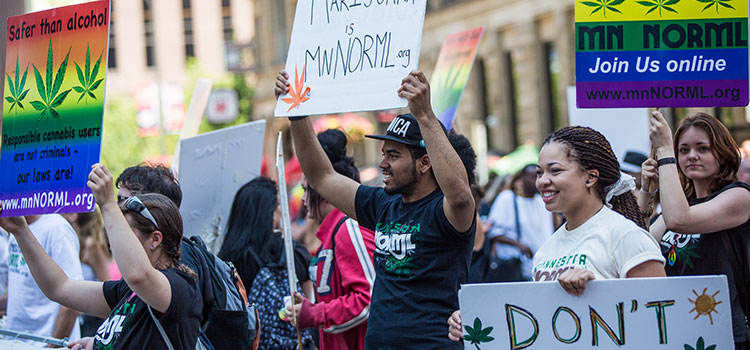
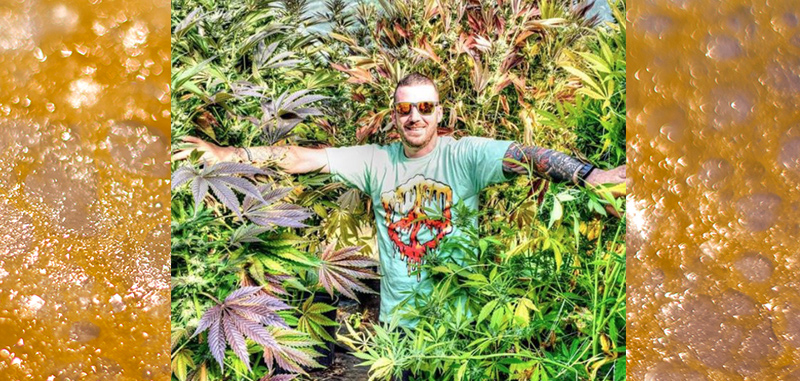





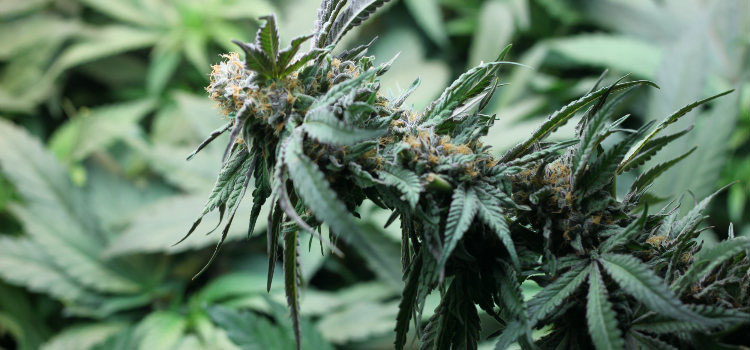

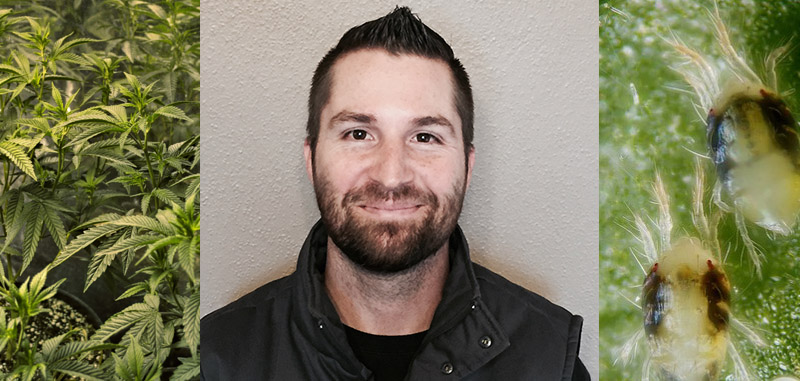
 Shane Young is the founder of
Shane Young is the founder of 
